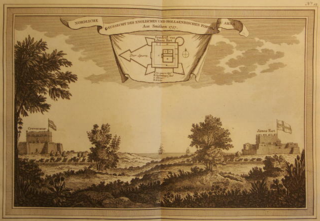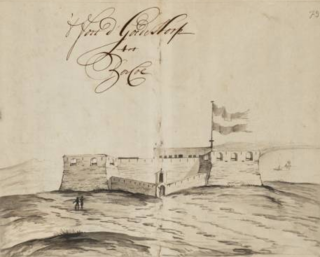
Accra is the capital and largest city of Ghana, located on the southern coast at the Gulf of Guinea, which is part of the Atlantic Ocean. As of 2021 census, the Accra Metropolitan District, 20.4 km2 (7.9 sq mi), had a population of 284,124 inhabitants, and the larger Greater Accra Region, 3,245 km2 (1,253 sq mi), had a population of 5,455,692 inhabitants. In common usage, the name "Accra" often refers to the territory of the Accra Metropolitan District as it existed before 2008, when it covered 199.4 km2 (77.0 sq mi). This territory has since been split into 13 local government districts: 12 independent municipal districts and the reduced Accra Metropolitan District (20.4 km2), which is the only district within the capital to be granted city status. This territory of 199.4 km2 contained 1,782,150 inhabitants at the 2021 census, and serves as the capital of Ghana, while the district under the jurisdiction of the Accra Metropolitan Assembly proper (20.4 km2) is distinguished from the rest of the capital as the "City of Accra".

Keta is a coastal town in the Volta Region of Ghana. It is the capital of the Keta Municipal District.

Danish overseas colonies and Dano-Norwegian colonies were the colonies that Denmark–Norway possessed from 1536 until 1953. At its apex, the colonies spanned four continents: Africa, Asia, Europe, and North America.

Cape Coast Castle is one of about forty "slave castles", or large commercial forts, built on the Gold Coast of West Africa by European traders. It was originally a Portuguese "feitoria" or trading post, established in 1555, which was named Cabo Corso.

Dangme East District is a former district that was located in Greater Accra Region, Ghana. Originally created as an ordinary district assembly in 1988, which was created from the former Dangme District Council. However on 28 June 2012, it was split off into two new districts: Ada East District and Ada West District. The district assembly was located in the eastern part of Greater Accra Region and had Ada Foah as its capital town.

The Danish Gold Coast comprised the colonies that Denmark–Norway controlled in Africa as a part of the Gold Coast, which is on the Gulf of Guinea. It was colonized by the Dano-Norwegian fleet, first under indirect rule by the Danish West India Company, later as a crown colony of the kingdom of Denmark-Norway. The area under Danish influence was over 10,000 square kilometres.

Fort Prinzenstein is a fort located at Keta, Ghana, which was used in the slave trade. Many such forts were built in Africa, but Prinzenstein is one of the few that lie east of the Volta River. Keta served as an open port until the Tema Harbour commenced its operation to the west in 1962. The fort has been designated a World Heritage Site because of its historical importance and testimony to the Atlantic slave trade.

Osu Castle is a castle located in Osu, Ghana, on the coast of the Gulf of Guinea in Africa.

Ada Foah is a town on the southeast coast of Ghana, where the Volta River meets the Atlantic Ocean. The town is located along the Volta River, off of the Accra-Aflao motorway. Known for palm-lined beaches and estuary islands, Ada Foah is also the capital of the Ada East District and the seat of the District Assembly.

Ussher Fort is a fort in Accra, Ghana. It was built by the Dutch in 1649 as Fort Crèvecœur, and is two days' march from Elmina and to the east of Accra on a rocky point between two lagoons. It was one of three forts that Europeans built in the region during the middle of the 17th century. Fort Crèvecœur was part of the Dutch Gold Coast. The Anglo-Dutch Gold Coast Treaty (1867), which defined areas of influence on the Gold Coast, transferred it to the British in 1868. Because of its significance in the history of European colonial trade and exploitation in Africa, the fort was inscribed on the UNESCO World Heritage List in 1979.

Fort Amsterdam is a former slave fort in Abandze, Central region, Ghana. It was built by the English between 1638 and 1645 as Fort Cormantin or Fort Courmantyne, and was captured by admiral Michiel de Ruyter of the Dutch West India Company in 1665, in retaliation for the capture of several Dutch forts by the English Admiral Holmes in 1664. It was subsequently made part of the Dutch Gold Coast, and remained part of it until the fort was traded with the British in 1868. The Fort is located at Abandze, on the north-east of Cape Coast in the Mfantseman District of the Central Region of Ghana. Because of its testimony to European economic and colonial influence in West Africa and its historical importance in the Atlantic slave trade, the fort was inscribed on the UNESCO World Heritage List in 1979 along with other forts and castles in Ghana.

Fort São Sebastião located in Shama, Ghana, is the third oldest fortification in Ghana. Along with several other castles in Ghana, it was inscribed on the UNESCO World Heritage List in 1979 because of its testimony to the history of European trade, colonization, and exploitation in the region.

Fort de Goede Hoop or Fort Good Hope was a fort on the Dutch Gold Coast, established in 1667 near Senya Beraku.

Old Ningo is a town in the Greater Accra Region of Ghana.

Fort William is a fort in Anomabu, Central Region, Ghana, originally known as Fort Anomabo and renamed Fort William in the 1830s by its then-commander, Brodie Cruickshank, who added one storey to the main building, and renamed the fort after King William IV.

The Danish slave trade occurred separately in two different periods: the trade in European slaves during the Viking Age, from the 8th to 10th century; and the Danish role in selling African slaves during the Atlantic slave trade, which commenced in 1733 and ended in 1807 when the abolition of slavery was announced. The location of the latter slave trade primarily occurred in the Danish West Indies where slaves were tasked with many different manual labour activities, primarily working on sugar plantations. The slave trade had many impacts that varied in their nature, with some more severe than others. After many years of slavery in the Danish West Indies, Christian VII decided to abolish slave trading.

Fort Frederiksborg, later Fort Royal, was a Danish and later English fort on the Gold Coast in contemporary Ghana. It was built in 1661, with the approval of the King of Fetu, a few hundred yards from Cape Coast Castle, which was at that time in Swedish hands, on Amanfro Hill. Along with several other castles and forts nearby, Fort Frederiksborg was inscribed on the World Heritage List in 1979 because of its testimony to European economic influence on West Africa and the Atlantic slave trade.
Tourism in Ghana is regulated by the Ministry of Tourism, Arts & Culture. This ministry is responsible for the development and promotion of tourism related activities in Ghana.























